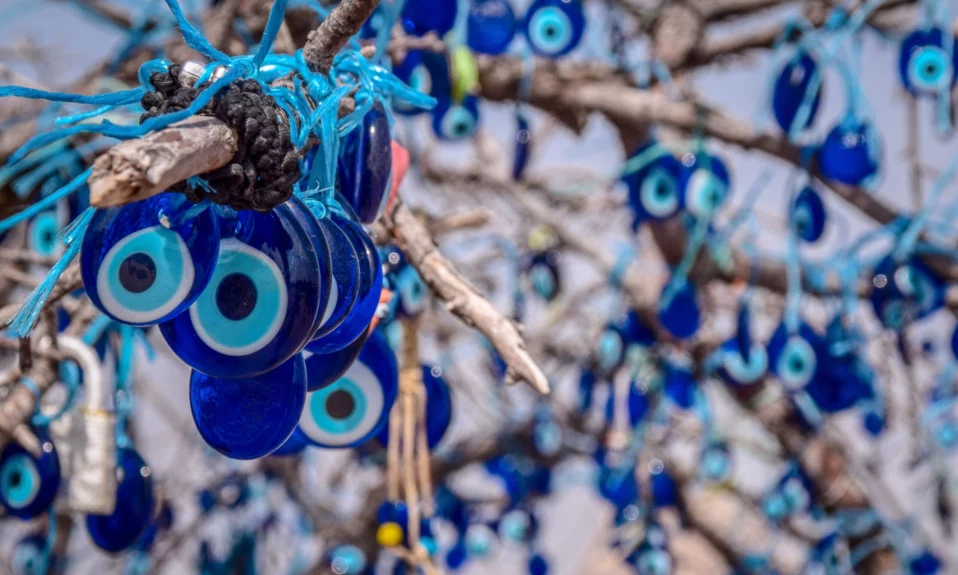

Psychopathology is a complex field, and humans can suffer from many disorders. Disorders of personality, mood, and anxiety: these are among the most common reasons for psychological consultation. Phobias, which are irrational fears that people suffer from and cause significant distress, are a type of anxiety disorder. They can greatly affect people’s lives. In this article, we are going to talk about one of the phobias that can have a great impact on people’s lives. Fear of colors or chromophobia!
What is phobia
Phobia is an extreme and irrational fear reaction. People who suffer from phobias often feel panic or a deep sense of dread when confronted by their fears. Fear can be associated with a certain location, situation, or object. Unlike general anxiety disorders, phobias are usually related to something specific.
Usually, phobias can have a wide range of effects, from annoying to severely disabling. Often, people with phobias are aware that their fears are irrational, but they are powerless to change them. Fears such as these can interfere with work, school, and personal relationships.
Causes of phobias
Phobias may result from both genetics and the environment. They are common in people with ongoing medical conditions or health concerns. A high percentage of people who suffer traumatic brain injuries develop phobias. Additionally, addiction and depression are connected with phobias.
What is Chromophobia
The fear of colors or chromophobia is a specific phobia characterized by the person suffering from it feeling an irrational fear of colors. The response varies from person to person, since each individual feels intense discomfort when faced with a specific color or multiple colors, to the point that imagining the color in question causes them great discomfort.
The term “chromophobia” comes from two Greek words, namely Chromos and Phobos, which respectively mean color and deep aversion. As a side note, Chromatophobia or Chromophobia is often described as a fear of smells or odors. However, a more common word for this fear is Osmophobia. Therefore, when we say that someone is a Chromatophobe, we normally mean that they cannot stand specific colors.
Chromophobia; Types and names
In chromophobia, the most common type is xanthophobia, which is an anxiety caused by yellow, or melanophobia, which is caused by the color black. In many cases, superstitions are at the root of this phobia.
Color phobia sufferers may only be sensitive to certain shades of color- say red, for example. This color is thought to invoke feelings of fear and dread (specifically Erythrophobia in scientific language) as it is symbolic of blood, death, or violence.
In other cases, the phobic might fear all bright colors. For such individuals, going about their daily lives can be difficult as specific colors can induce panic attacks or anxiety. People with color phobias generally suffer from a variety of debilitating symptoms. Most of the time, they are unable to hold down jobs or have stable relationships. As a result, their lives can become miserable. Their fear of seeing the colors they hate can make them hesitant to go outdoors.
Different names for phobias associated with specific colors:
Fear of blue color: Cyanophobia
Fear of yellow color: Xanthophobia
Fear of green color: Prasinophobia
Fear of orange color: Chrysophobia
Fear of pink color: Rhodophobia
Fear of brown color: Kastanophobia
Fear of white color: Leukophobia
Fear of black color: Melanophobia
Causes of Chromophobia
One of the most common causes of Chromophobia is post-traumatic stress disorder. An event in childhood may lead to permanent emotional scarring associated with certain colors or shades that the phobic cannot grow out of. There are many incidents that could be linked to a particular color, causing the phobic to panic. Child abuse, rape, death, accidents, and violence are some examples.
Cultural roots also contribute to the fear of colors. There are certain cultures that assign significant meanings to specific colors, which can be negative for those who are phobic. As an example, westerners consider certain colors to be foreign, superficial, or corrupting.
Classical conditioning can be responsible for the deep fear or hatred a person has of certain colors. There are some colors that are just disagreeable. An old and moldy cheese, for instance, has a pale sickly color associated with germs and disease, which may be associated negatively.
In addition, hereditary, brain chemistry, some deficiencies, and existing phobias can also result in Chromatophobia.
Symptoms of Chromophobia
Color phobia symptoms vary from person to person depending on the level of the fear. Typical symptoms include:
- Panic attacks or extreme anxiety
- Rapid and shallow breathing – shortness of breath
- Getting sweaty a lot
- Heartbeats that are irregular
- Nausea
- Dry mouth
- Lack of ability to speak or formulate coherent sentences
- Shaking, shivering, trembling
Additionally, phobics may have Agoraphobia, or a fear of leaving their homes. The inability to form friendships may lead to depression due to loneliness. One may not be able to hold down a job or may refuse to travel for work. Behavioral self-limitations may hinder one’s academic or professional performance.
Treatment for the fear of colors
The best way to get over a fear of colors is to use a therapy such as hypnotherapy, neuro-linguistic programming, or psychotherapy, which have all demonstrated the ability to overcome various kinds of phobias. A number of medications are available to treat anxiety, however these have side effects that can be debilitating.
Hypnosis: This treatment for Chromatophobia must be done under the guidance of a well-trained specialist. This therapy opens up the mind of the phobic to new ideas. The therapist instructs the phobic’s mind to attach different emotions to the object of fear, in this case the color or the smell.
NLP – Neuro Linguistic Programming: This is the study of how our minds create reality. In order to change the fear of colors, we need to change words and perceptions. Analysts listen to the words and phrases used by phobics to describe their fears. After that, the therapist attempts to get rid of those mental associations and thoughts that cause panic attacks when the phobic sees the colors they fear.
Treatment for color phobia can also include other mind-body techniques such as energy healing. These include practices like yoga, taichi, positive visualization, and deep meditation, as well as breathing techniques. For treating Chromophobia, it is better to use these non-medical approaches rather than drugs that have numerous side effects.
Conclusion
Chromophobia can be very annoying like the other phobias or even more; because colors exist everywhere and play an important rule in our life. To know how each color affect us, you can read this article.
If your phobia keeps you from doing things you normally enjoy, or it causes intense and overwhelming fear, anxiety or panic and you recognise that your fear is out of proportion to the danger, you should treat that as soon as possible. So you can enjoy your normal life.
What kind of weird phobias do you know? Comment below!










It’s unfair to label this as a phobia or irrational fear, as many people with chromophobia suffer from sensory processing disorder. Observing bright colors is one of the most stimulating experiences humans can have, even for people with neurotypical brains. This is because in nature bright colors are meant to grab our attention in the case of food, or steer us away in the case of poison. Yet in our modern world bright colors are far more abundant than in nature, and often far brighter, with neon signs all over roads and storefronts and artificial dyes and plastics everywhere. This can easily create overstimulation in anyone, and induce panic attacks in people with hyper sensitive nervous systems. The only solution that has been found for the problem of hyperstimulation is a lower stimulation environment, and more exposure to natural areas. We should work to make our world less stressful and more health promoting for everyone, but especially those who suffer severely from our modern world.